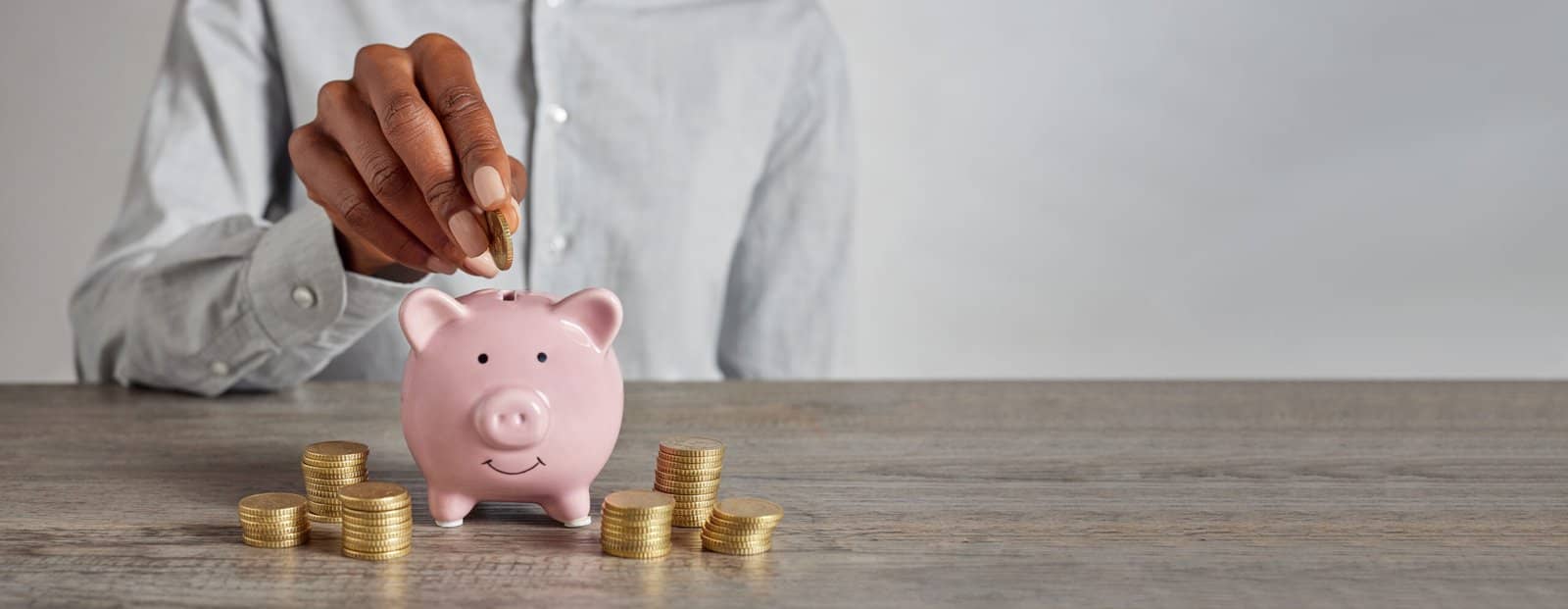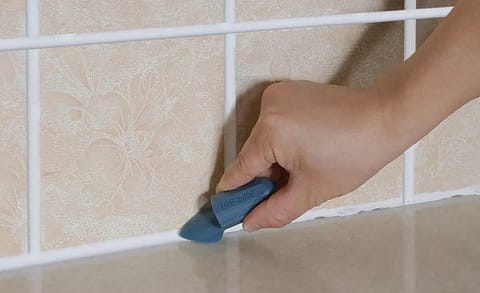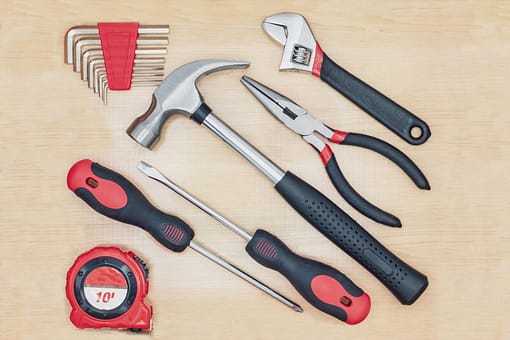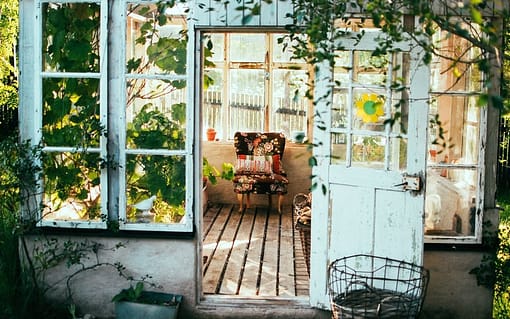So, you’ve been hearing a lot about this whole DIY trend, and you can’t help but wonder how it can actually help you save money. Well, fret not, because in this article, we’ll explore the ins and outs of using DIY (Do It Yourself) methods to cut down on expenses. From simple home repairs to crafting your own gifts, we’ll dive into the world of DIY and show you how it can truly be a game-changer for your wallet. Ready to unleash your inner handyman? Let’s get started!

Research and Planning
Identify the Project
When it comes to starting a DIY project, the first step is to identify what needs to be done. Take a walk around your home and make a list of any repairs or improvements that you would like to tackle. This could include anything from fixing a leaky faucet to updating kitchen cabinets. By identifying the projects you want to work on, you can prioritize them and create a plan of action.
Set a Budget
Once you have identified the projects you want to tackle, it’s important to set a budget. Determine how much money you are willing to spend on each project and allocate funds accordingly. This will help you stay on track and avoid overspending. It’s also a good idea to research the cost of materials and tools that you will need for each project, so you can factor those expenses into your budget as well.
Research Materials and Tools
Before you start any DIY project, it’s important to research the materials and tools you will need. Take the time to read reviews and compare prices to ensure you are getting the best quality products at the best price. Additionally, make a list of any tools that you do not currently have but will need for your project. This will help you avoid any surprises or delays once you start working.
Create a Timeline
Creating a timeline is a crucial step in any DIY project. Determine how much time you are willing to commit to each project and break it down into manageable tasks. This will help you stay organized and ensure that you complete your projects in a timely manner. Be sure to factor in any additional time for researching materials, purchasing supplies, and any unforeseen delays that may arise during the process.
DIY Home Repairs
Fixing Leaky Faucets
Fixing a leaky faucet is a common household repair that can save you money on your water bill. Start by turning off the water supply to the faucet and then disassemble it to determine the cause of the leak. In most cases, a faulty rubber washer or O-ring is the culprit. Replace any damaged parts and reassemble the faucet. Be sure to check for any leaks once you turn the water supply back on.
Repairing Drywall
Whether it’s from a doorknob or a hole that needs patching, repairing drywall is a skill that can save you money on hiring a professional. Start by cutting away any damaged or loose drywall and then attach a new piece of drywall using screws or nails. Use joint compound to cover the seams and any screw or nail holes. Sand the area smooth and then apply primer and paint to match the surrounding wall.
Replacing Electrical Outlets
If you have an outdated or malfunctioning electrical outlet, replacing it yourself can save you money on hiring an electrician. Start by turning off the power to the outlet at the breaker box. Remove the outlet cover plate and then disconnect the wires from the old outlet. Connect the wires to the new outlet, making sure to match the correct color-coded terminals. Secure the new outlet to the electrical box and then turn the power back on to test it.
Painting Interior Walls
Painting interior walls is a DIY project that can completely transform the look and feel of a room. Start by prepping the walls by filling any holes or cracks with spackling compound and sanding them smooth. Use painter’s tape to protect trim, baseboards, and ceilings from paint. Prime the walls if necessary and then apply a coat or two of paint, allowing each coat to dry before applying the next. Use a roller for larger areas and a brush for edges and corners.
DIY Home Improvement
Updating Kitchen Cabinets
Updating kitchen cabinets can give your kitchen a whole new look without the need for a complete renovation. Start by removing the cabinet doors and hardware. Clean the surfaces and sand them to create a smooth surface for painting or staining. Apply a coat of primer and then paint or stain the cabinets as desired. Replace the hardware with new knobs or handles for a fresh and updated look. Reattach the doors and enjoy your newly updated kitchen.
Installing Laminate Flooring
Installing laminate flooring can be a cost-effective way to update the look of your home. Start by removing any existing flooring and ensuring that the subfloor is level and clean. Lay down a moisture barrier and then begin installing the laminate planks, following the manufacturer’s instructions. Use spacers to maintain a consistent gap between the planks and the walls. Once all the planks are installed, trim off any excess and install the baseboards.
Building Shelves
Building shelves is a DIY project that can add storage and organization to any room in your home. Start by measuring and marking the desired height and width of the shelves on the wall. Use a level to ensure that the marks are straight. Install shelf brackets or build shelf supports using wood. Cut the shelves to size and attach them to the brackets or supports. Paint or stain the shelves to match your decor and then fill them with books, decor items, or storage bins.
Tiling a Bathroom
Tiling a bathroom is a DIY project that can give your bathroom a fresh and updated look. Start by removing any existing tiles and ensuring that the wall or floor surface is clean and free of debris. Begin by applying a layer of thin-set mortar to the surface, using a notched trowel to create ridges for better adhesion. Press the tiles into the mortar, working in small sections at a time. Use tile spacers to ensure even spacing between the tiles. Once the mortar has dried, apply grout to the gaps between the tiles and wipe away any excess.
DIY Furniture Projects
Refinishing Old Furniture
Refinishing old furniture is a DIY project that can give new life to worn or outdated pieces. Start by removing any existing finishes, such as paint or varnish, using sandpaper or a chemical stripper. Sand the surface smooth and then apply a new finish, such as paint or stain, to achieve the desired look. Consider adding new hardware or accents to further enhance the piece.
Building a Bookshelf
Building a bookshelf is a DIY project that can provide functional storage and add a personal touch to your space. Start by measuring and planning the size and design of your bookshelf. Cut the wood to size and assemble the frame using screws or nails. Attach the shelves at the desired heights and then sand the surface smooth. Finish the bookshelf with paint or stain to match your decor.
Upcycling Pallets
Upcycling pallets is a popular DIY project that can turn discarded pallets into unique furniture pieces. Start by disassembling the pallets and removing any nails or staples. Sand the wood to create a smooth surface and then plan your design. Use the pallet wood to build anything from coffee tables to outdoor benches. Finish the piece with paint or stain and add any additional accents or hardware.
Making a Bed Frame
Making a bed frame is a DIY project that can save you money on buying a new one. Start by measuring your mattress and planning the size and design of your bed frame. Cut and assemble the wood or metal frame using screws or nails. Add support slats or a platform for the mattress to sit on. Finish the bed frame with paint or stain and add any additional accents or headboard if desired.
DIY Crafts and Decor
Creating Wall Art
Creating wall art is a DIY project that can add a personal touch to your home decor. Start by brainstorming ideas and determining the style and theme for your wall art. Consider using materials such as canvas, wood, or even repurposed items. Use paint, markers, or other art supplies to create your design. Add any additional accents or details and then hang your creation on the wall.
Designing Custom Pillows
Designing custom pillows is a DIY project that can add comfort and style to any room. Start by choosing the fabric and size for your pillows. Cut the fabric to size, leaving a small seam allowance. Sew the fabric together, leaving one side open for stuffing. Fill the pillow with stuffing or a pillow insert and then sew the opening closed. Add any additional embellishments or details to personalize your pillows.
Making Candles
Making candles is a DIY project that can create a cozy and inviting atmosphere in your home. Start by choosing the type of wax and fragrance for your candles. Melt the wax using a double boiler or microwave, following the manufacturer’s instructions. Add the desired fragrance and pour the melted wax into candle molds or containers. Insert the wick and allow the candles to cool and harden. Trim the wick and enjoy your homemade candles.
Repurposing Mason Jars
Repurposing mason jars is a creative DIY project that can have endless possibilities. Start by cleaning and preparing the mason jars. Consider using them as flower vases, storage containers, or even as candle holders. Paint or decorate the jars to match your decor or add any additional accents or embellishments. Use your repurposed mason jars to add a touch of charm and functionality to any space.
Gardening and Landscaping
Starting a Vegetable Garden
Starting a vegetable garden is a rewarding DIY project that can provide you with fresh and healthy produce. Start by choosing a sunny location for your garden and preparing the soil by removing any weeds or debris. Plan the layout of your garden and decide which vegetables you want to grow. Start the seeds indoors or directly sow them into the soil, following the instructions on the seed packets. Water and care for your plants as needed, and soon you will be enjoying the fruits of your labor.
Building a Raised Flower Bed
Building a raised flower bed is a DIY project that can add beauty and depth to your landscape. Start by choosing the location and size for your raised bed. Clear the area and prepare the soil by removing any weeds or debris. Use wood, stone, or bricks to build the perimeter of the raised bed. Fill it with a mixture of topsoil, compost, and organic matter. Plant your flowers or shrubs, and enjoy the vibrant colors and fragrances they bring to your garden.
Designing a Landscape Plan
Designing a landscape plan is a DIY project that can transform your outdoor space into a beautiful and functional oasis. Start by assessing your current landscape and making note of any features you want to keep or change. Determine your goals and preferences, such as creating a seating area, planting flowers, or adding a water feature. Research and select the plants, materials, and structures that will best suit your vision. Sketch out your plan, taking into consideration factors such as sunlight, drainage, and maintenance. Implement your plan by planting, building, and arranging the elements of your landscape.
Maintaining a Healthy Lawn
Maintaining a healthy lawn is a DIY project that can save you money on hiring a professional service. Start by mowing your lawn at the proper height and frequency to promote healthy growth. Water your lawn deeply and infrequently to encourage deep root growth. Fertilize your lawn with the appropriate nutrients for your grass type. Control weeds by pulling or spot-treating them as needed. Regularly aerate and dethatch your lawn to improve air circulation and reduce compaction. With proper care, your lawn will thrive and provide a lush and inviting space for outdoor activities.
DIY Fashion and Accessories

Sewing Clothing
Sewing clothing is a DIY project that allows you to create unique and personalized garments. Start by choosing a pattern and fabric for your desired clothing item. Cut out the pattern pieces and use them as a guide to sew the garment together, following the instructions included with the pattern. Add any desired embellishments or details and make any necessary adjustments for fit. With practice and creativity, you can sew your own clothes and showcase your personal style.
Making Jewelry
Making jewelry is a DIY project that allows you to create one-of-a-kind accessories. Start by choosing the type of jewelry you want to make, such as necklaces, bracelets, or earrings. Select the materials, such as beads, pendants, or charms, that you want to use. Use jewelry-making tools, such as pliers and wire cutters, to assemble your pieces. Experiment with different designs and techniques to create stunning and unique jewelry that reflects your individual taste.
Creating Handbags
Creating handbags is a DIY project that allows you to carry a personalized accessory wherever you go. Start by choosing a style and size for your handbag. Select the fabric and any additional materials, such as zippers or hardware, that you want to use. Cut out the pattern pieces and sew them together, following the instructions or your own design. Add any desired pockets, straps, or embellishments to complete your handbag. With your own handmade creation, you can make a fashion statement while expressing your creativity.
Customizing Shoes
Customizing shoes is a DIY project that allows you to give new life to old or plain footwear. Start by selecting a pair of shoes that you want to customize. Determine the design or theme that you want to incorporate, such as painting, stenciling, or adding embellishments. Use fabric paint, markers, or other art supplies to customize the shoes according to your vision. Add any additional accents or details, such as lace or charms, to further personalize your shoes. With a little creativity and some DIY magic, you can turn a basic pair of shoes into a fashion statement.
DIY Beauty and Personal Care
Making Natural Bath Products
Making natural bath products is a DIY project that allows you to pamper yourself with luxurious and chemical-free products. Start by gathering ingredients, such as essential oils, carrier oils, and natural butters, for your desired bath products. Experiment with recipes to create your own customized bath salts, bath bombs, or bath oils. Use natural dyes and additives, such as dried flowers or herbs, to enhance the appearance and fragrance of your products. With your own handmade bath products, you can indulge in a spa-like experience and take care of your skin in a natural and eco-friendly way.
Creating Homemade Face Masks
Creating homemade face masks is a DIY project that allows you to nourish and rejuvenate your skin using simple and natural ingredients. Start by choosing ingredients that are suitable for your skin type and concerns, such as honey, yogurt, or clay. Mix the ingredients together to create a paste or mask consistency. Apply the mask to your clean face, avoiding the eye and mouth areas, and leave it on for the recommended time. Rinse off the mask with warm water and enjoy the refreshed and glowing results.
DIY Hair Treatments
DIY hair treatments are a cost-effective and natural way to improve the health and appearance of your hair. Start by determining your hair type and concerns, such as dryness, frizz, or dandruff. Choose ingredients that target those concerns, such as avocado, coconut oil, or apple cider vinegar. Mix the ingredients together and apply the treatment to your clean, damp hair. Cover your hair with a shower cap or towel and leave the treatment on for the recommended time. Rinse it out thoroughly and enjoy the nourished and lustrous results.
Crafting Perfumes and Body Oils
Crafting your own perfumes and body oils is a DIY project that allows you to create unique scents that reflect your personality and style. Start by gathering essential oils and carrier oils that you enjoy or that blend well together. Experiment with different combinations and proportions to create your signature scent. Store the perfumes or body oils in small bottles or rollerballs for easy application. With your own handmade creations, you can enjoy a lingering fragrance that is uniquely yours.
DIY Gifts
Handmade Cards
Handmade cards are a thoughtful and personal way to express your sentiments for any occasion. Start by gathering cardstock, decorative paper, and other materials such as stamps or stickers. Cut and fold the cardstock to create the base of your card. Use decorative paper, stamps, or other embellishments to decorate the front of the card. Write a heartfelt message inside and consider adding any additional elements or surprises, such as a pocket for a gift card. With a handmade card, you can show your loved ones how much you care.
Personalized Photo Frames
Personalized photo frames are a sentimental and meaningful gift that showcases cherished memories. Start by selecting a plain photo frame that you can customize. Choose a theme or design that complements the photo or the recipient’s style. Use paint, markers, or other art supplies to personalize the frame with names, dates, or special messages. Add any additional accents or embellishments to enhance the design. Insert a favorite photo or leave it blank for the recipient to add their own. With a personalized photo frame, you can capture and display precious moments.
Homemade Candles
Homemade candles make a cozy and thoughtful gift for any occasion. Start by selecting the type of wax and fragrance that you want to use. Melt the wax using a double boiler or microwave and add the desired fragrance. Pour the melted wax into a container or mold, and insert a wick in the center. Allow the candle to cool and harden, then trim the wick. Personalize the candle with labels, ribbons, or additional accents. With a homemade candle, you can create a warm and inviting atmosphere for your loved ones.
Customized Gift Baskets
Customized gift baskets are a versatile and personalized gift idea that can be tailored to the recipient’s preferences. Start by selecting a theme or occasion, such as a spa day, gourmet treats, or a movie night. Choose a variety of items that fit the theme, such as bath products, snacks, or DVDs. Arrange the items in a decorative basket or container and add any additional accents, such as ribbons or tissue paper. With a customized gift basket, you can create a memorable and personalized gift that shows you put thought into the recipient’s interests and preferences.
DIY Repairs and Maintenance
Fixing a Bicycle
Fixing a bicycle is a handy DIY skill that can save you money on repairs and maintenance. Start by identifying the issue with the bike, such as a flat tire, loose chain, or faulty brakes. Gather the necessary tools, such as a pump, wrench, or screwdriver. Fix the issue by following repair tutorials or consulting a bike repair manual. With some patience and know-how, you can keep your bike in top shape and enjoy smooth rides for years to come.
Repairing Small Appliances
Repairing small appliances is a valuable DIY skill that can extend the lifespan of your appliances and save you money on replacements. Start by identifying the issue with the appliance, such as a malfunctioning switch, broken cord, or faulty motor. Unplug the appliance and gather the necessary tools, such as a multimeter, soldering iron, or replacement parts. Follow repair guides or tutorials to fix the issue, ensuring your safety at all times. With a little troubleshooting and DIY know-how, you can keep your small appliances running smoothly.
Maintaining a Car
Maintaining a car is an essential DIY skill that can save you money on costly repairs and ensure the longevity of your vehicle. Start by familiarizing yourself with your car’s owner’s manual and maintenance schedule. Learn how to check and top up fluids, change wiper blades, replace air filters, and perform regular inspections of tires, brakes, and lights. Gather the necessary tools, such as a jack, tire gauge, and basic hand tools. With regular maintenance and care, you can keep your car running smoothly and avoid breakdowns on the road.
Troubleshooting Electronics
Troubleshooting electronics is a valuable DIY skill that can save you money on repairs and prevent you from having to replace expensive devices. Start by identifying the issue with the electronic device, such as a blank screen, malfunctioning buttons, or connectivity problems. Consult the user manual or search online for troubleshooting guides specific to your device. Follow step-by-step instructions or contact customer support for further assistance. With some patience and DIY problem-solving skills, you can tackle electronic issues and potentially bring your devices back to life.
In conclusion, using DIY to save money is an empowering and practical approach to home repairs, improvements, crafts, and more. By identifying projects, setting a budget, conducting thorough research, and creating a timeline, you can successfully tackle a wide range of DIY endeavors. Whether it’s fixing leaky faucets, updating kitchen cabinets, crafting homemade gifts, or troubleshooting electronics, the world of DIY offers endless opportunities for creativity, savings, and personal fulfillment. So roll up your sleeves, grab your tools, and embark on your DIY journey to save money and create a home that truly reflects your style and personality.












